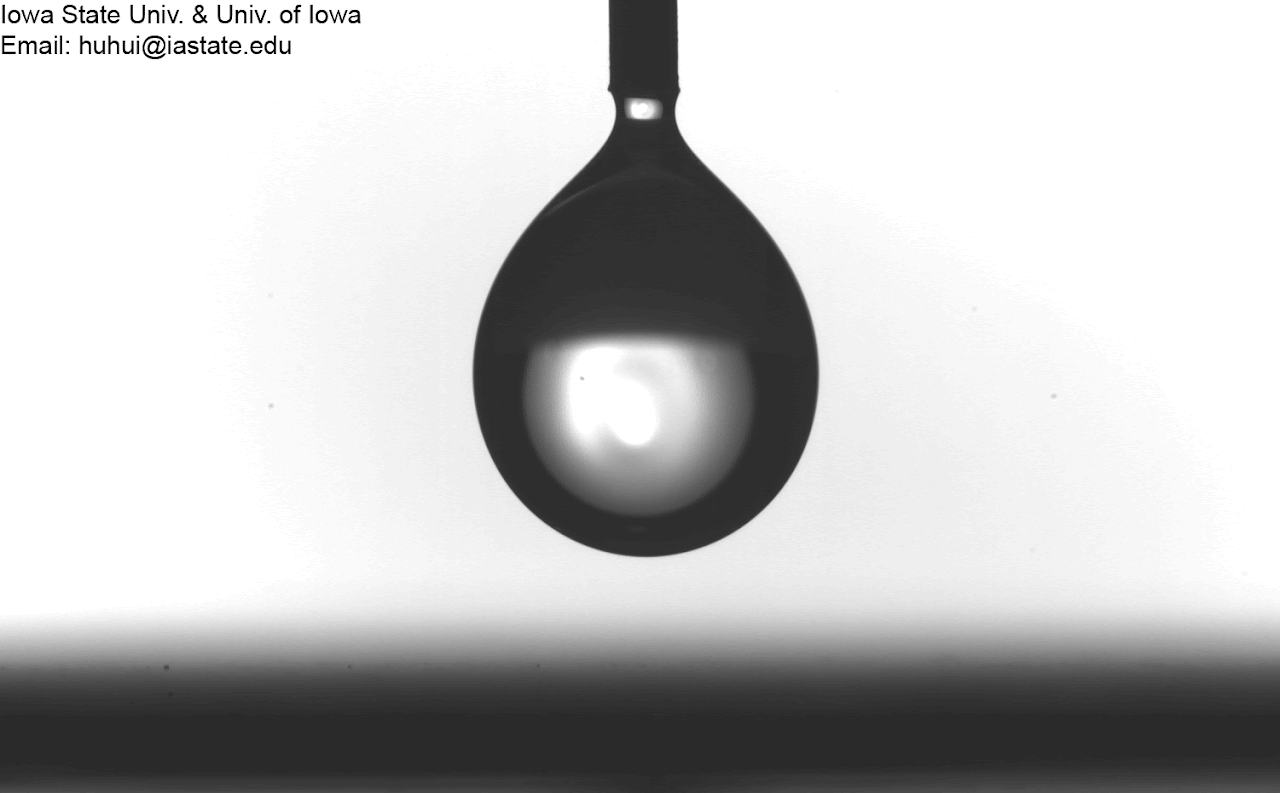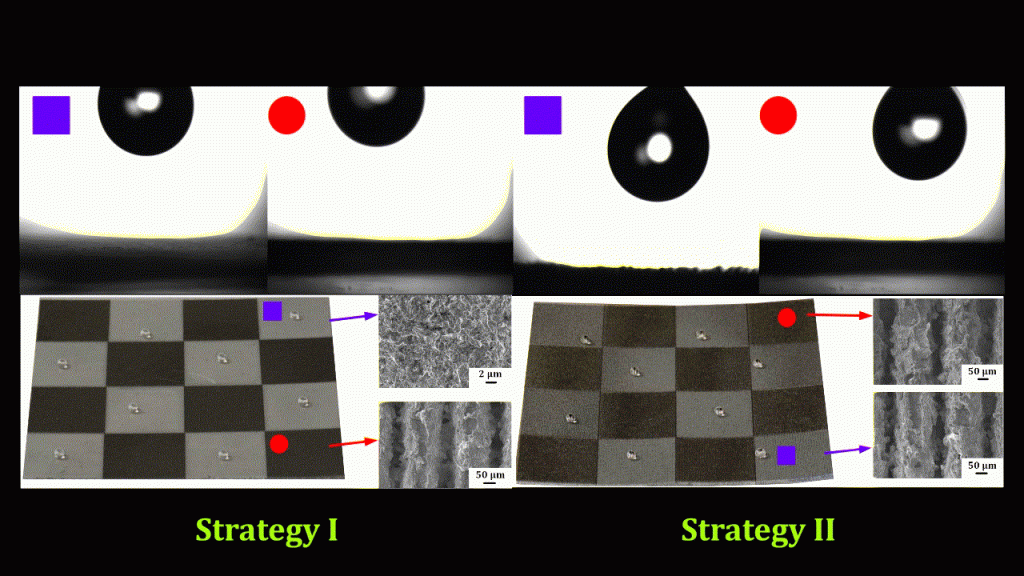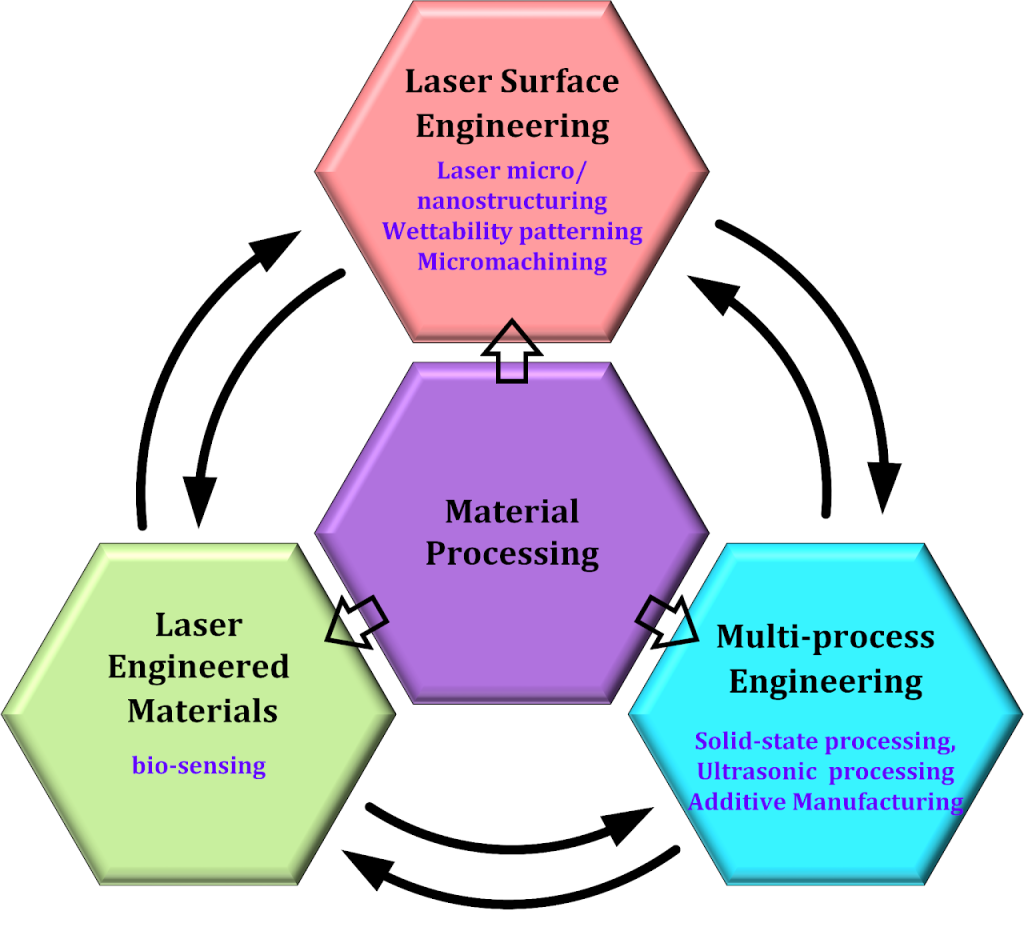Wettability Modification by Laser Processing

We have developed an inexpensive high-throughput laser-based nanostructuring process to transform metal surfaces to achieve multi-functionalities that combine tunable wettability, self-cleaning, and anti-reflectivity.
The wettability of the nanostructured surface was tuned from superhydrophobicity to superhydrophilicity by controlling the surface nanostructures and chemistry. The final wetting performance of laser-textured surfaces is a complex combination of surface micro/nanostructures and chemistry. We developed a systematic design approach to modify the dispersive and non-dispersive components of surface chemistry of the same laser-textured metal alloys to achieve various extreme wettabilities for a target application. It demonstrates surface chemistry design to match different applications, including repelling water and oil, absorbing water and oil, and separating oil and water from a mixture. We have shown that laser-textured surfaces can have enhanced properties in different application environments, such as:
- Enhanced anti-icing behavior
- Light-absorbing capability in visible and infrared spectra
- Excellent corrosion protection
- Selective catalytic activity
Wettability Patterning
By carefully controlling the surface chemistry and surface structure, we developed a maskless laser-based processing technique to fabricate a patterned wetting surface where alternating water affinitive and repellant regions co-exist side by side. Wettability-patterned surfaces have shown the potential for efficient fog harvesting for drinking water.
Friction stir processing to improve mechanical properties
Friction stir processing (FSP) is used on thin-wall high-pressure die cast (HPDC) parts to induce microstructural change locally. FSP eliminates porosity and breaks down detrimental microstructural phases, yielding a refined, homogeneous distribution. An intense thermomechanical event produced severe plastic deformation at high temperatures, resulting in dynamic recrystallization that yielded microstructural change. The FSP-driven microstructural refinement and porosity reduction improve yield strength, ductility, and high-cycle fatigue life.

Modeling and Simulation
We have developed numerical models to study thermomechanical material behavior and microstructure evolution in continuum and atomic-scale for ultrasonic- and friction-stir-based joining processes for the electric car battery cell. These numerical simulations helped us to rationally narrow down the process design parameters without expensive tooling and prototyping for joining processes.
1. Molecular dynamics simulation for interfacial diffusion
2. Finite element process model for thermomechanical response
3. Cellular automata-based model for microstructure evolution
Research Group Worked With
Laser Material Processing Lab, Mechanical & Industrial Engineering, University of Iowa, USA
Machine Tool Laboratory, Mechanical Engineering, IIT Bombay, India
